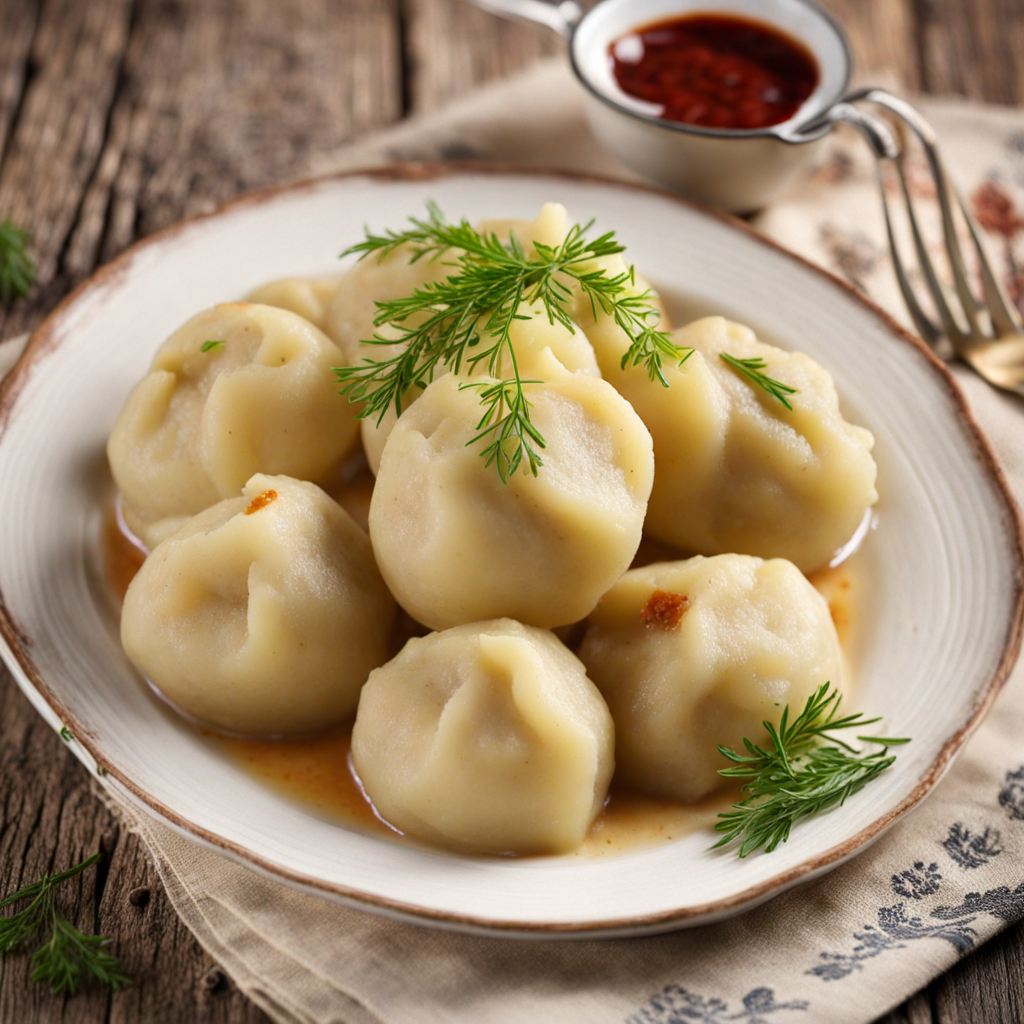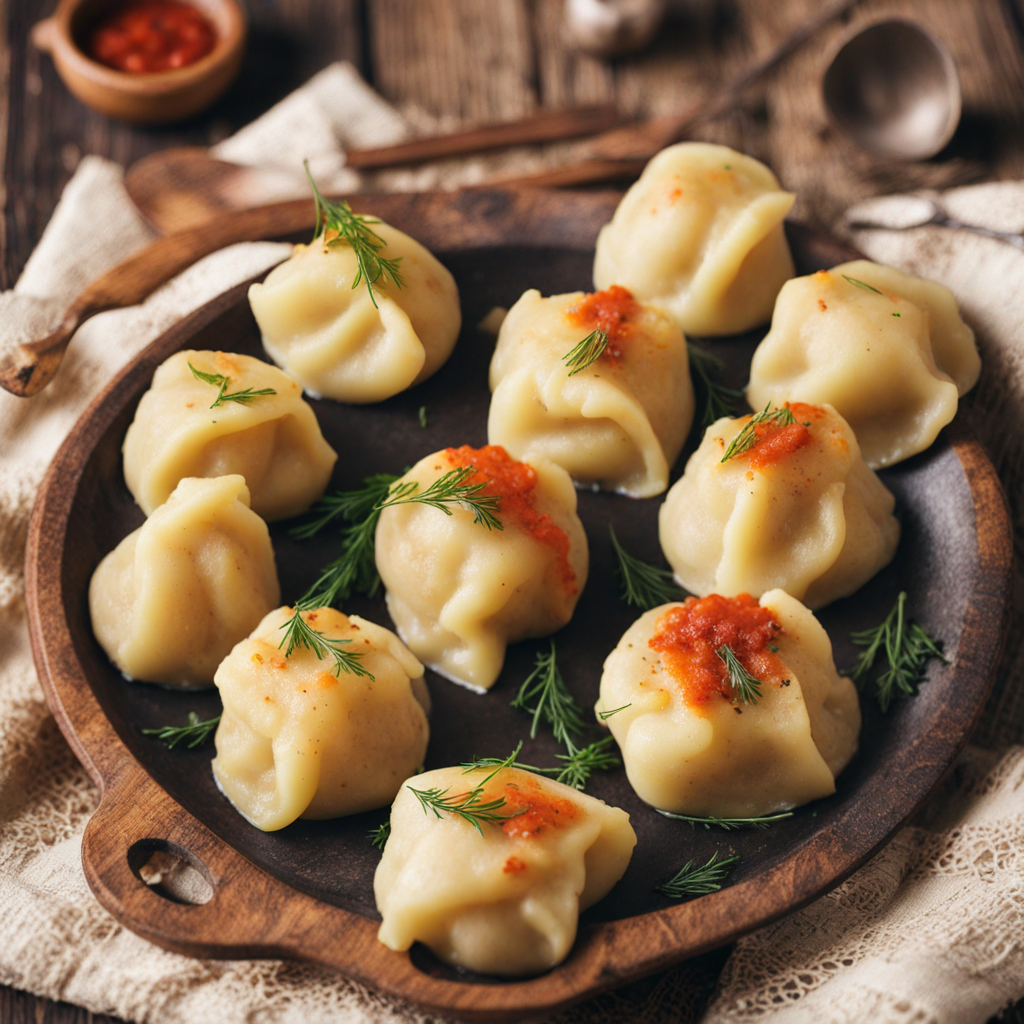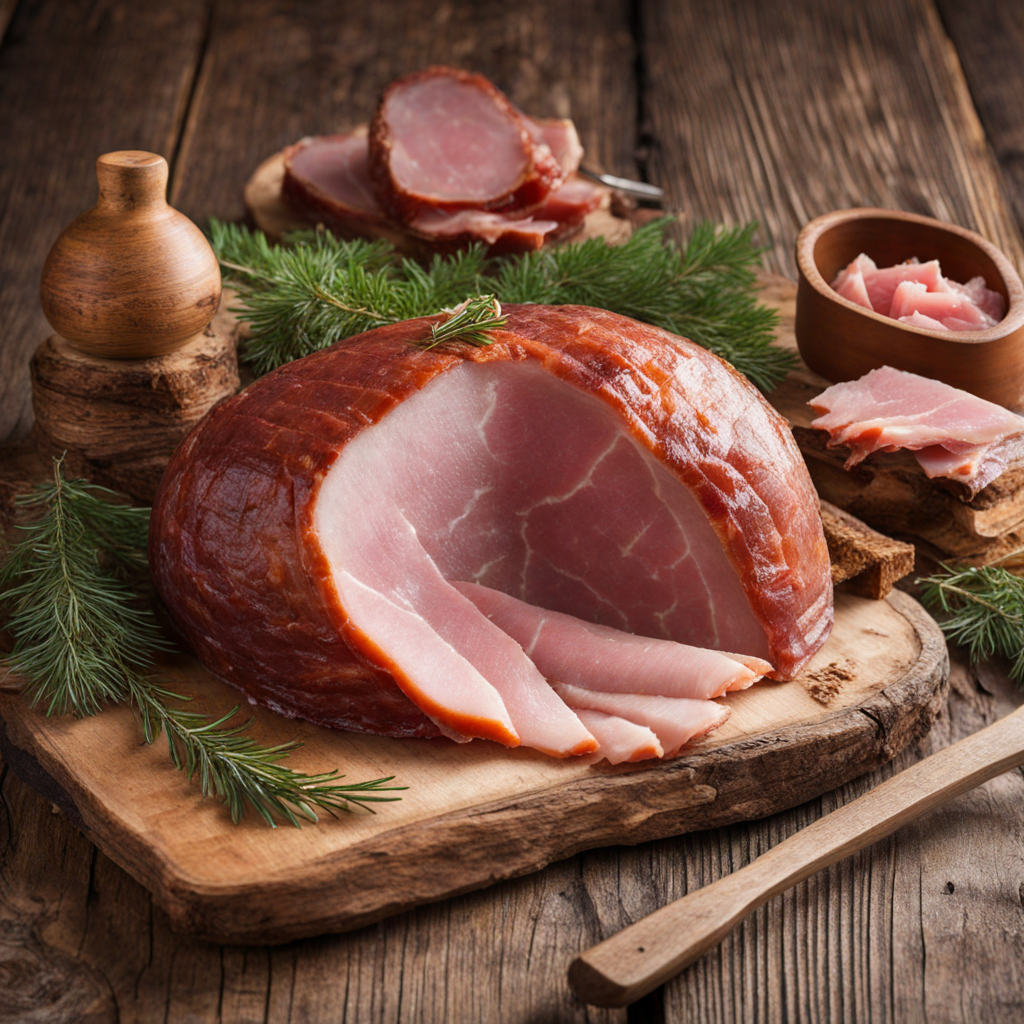Potato Dumplings
Potato dumplings, known as "kartulid" in Estonia, are a delightful culinary treasure that showcases the country's love for simple yet hearty ingredients. These dumplings are primarily made from boiled potatoes that are mashed and mixed with flour, creating a tender yet firm dough. The dough is then shaped into small balls or ovals and can be filled with a variety of ingredients, such as savory meats, mushrooms, or even sweet fillings like fruit. The versatility of potato dumplings makes them a beloved comfort food in Estonia, enjoyed by families across the nation. Once cooked, the dumplings are typically boiled until they float to the surface, indicating they are perfectly done. They can be served with melted butter, sour cream, or a sprinkle of fresh herbs for added flavor. Each bite reveals a soft and fluffy texture, complemented by the rich taste of the potato. The simplicity of the ingredients allows the dumplings to absorb the flavors of the accompanying sauces and sides, making every meal a warm and satisfying experience. Traditional Estonian potato dumplings are often served alongside dishes like sauerkraut, fried bacon, or a rich meat stew, creating a harmonious balance of flavors and textures. They embody the essence of Estonian cuisine—wholesome, comforting, and deeply rooted in the country’s agricultural heritage. Discovering potato dumplings is not just about tasting a new dish; it’s an invitation to savor the warmth of Estonian hospitality and the rich traditions that come with each lovingly crafted dumpling.
How It Became This Dish
Kartuliklimbid: A Culinary Journey through Estonian Heritage In the heart of Estonia, nestled amongst the verdant landscapes and shimmering lakes, lies a dish that embodies the spirit and resilience of its people: kartuliklimbid. These delightful potato dumplings, often filled with rich ingredients and served with a variety of accompaniments, are more than just a meal; they represent the intersection of history, culture, and the unyielding connection between the Estonian people and their land. Origins: The Birth of Kartuliklimbid Kartuliklimbid, which translates to "potato dumplings" in English, have their roots deep in the agricultural traditions of Estonia. Potatoes were introduced to Estonia in the late 18th century, during a time when the region was under Russian and Swedish rule. Initially met with skepticism, these tubers quickly became a staple of Estonian cuisine, thriving in the country's cooler climate and poor soils. The use of potatoes in cooking allowed for new culinary innovations and adaptations, leading to the creation of kartuliklimbid. The dumpling's texture and versatility made it a perfect canvas for various fillings, which often included meats, mushrooms, or even sweet variations with fruits. The dish became popular among rural communities, where it was frequently prepared during festive occasions and family gatherings, underscoring the communal aspect of Estonian culture. Cultural Significance: More than Just a Meal Kartuliklimbid hold a special place in the hearts of Estonians, transcending mere sustenance. They are often associated with family traditions and celebrations, such as Christmas and Midsummer festivals. The process of making kartuliklimbid is often a communal activity, where family members gather in the kitchen to share stories, laughter, and culinary techniques passed down through generations. During the Soviet occupation from 1940 to 1991, traditional Estonian foods like kartuliklimbid became symbols of national identity and resistance. The use of locally sourced ingredients and adherence to traditional recipes allowed Estonians to preserve their cultural heritage in the face of oppression. Kartuliklimbid served as a reminder of home, a taste of freedom, and a link to the past when many aspects of Estonian culture were suppressed. The dish also reflects the broader agricultural practices of Estonia, where the reliance on seasonal and local produce is paramount. Potatoes, being a hardy crop, were often the backbone of many households, making kartuliklimbid not just a culinary delight but also a reflection of the resilience and adaptability of the Estonian people. Development Over Time: Evolution of a Culinary Tradition As Estonia underwent significant political and social changes throughout the 20th century, so too did kartuliklimbid. The collapse of the Soviet Union in 1991 marked a new era for Estonian cuisine. The newfound independence allowed for a revival of traditional foods and culinary techniques that had been stifled during Soviet rule. The 1990s and early 2000s saw a resurgence of interest in Estonian cuisine, with chefs and home cooks alike experimenting with traditional recipes while incorporating modern culinary techniques. Kartuliklimbid evolved from a simple, rustic dish into a more sophisticated culinary offering. Contemporary chefs began to play with flavors, fillings, and presentation, elevating kartuliklimbid to new heights. Ingredients like smoked fish, wild game, and locally foraged mushrooms found their way into the dumplings, showcasing Estonia's rich natural resources. In recent years, there has been a growing emphasis on sustainability and local sourcing within the Estonian culinary scene. This movement has further strengthened the connection between kartuliklimbid and the land. Chefs are increasingly focused on using organic, locally-sourced ingredients, often visiting farms and markets to ensure the highest quality. This commitment to sustainability not only honors the traditions of kartuliklimbid but also aligns with a global trend towards responsible eating. Modern Interpretations and Global Recognition Today, kartuliklimbid are celebrated as a cornerstone of Estonian cuisine, both in Estonia and abroad. They have gained recognition in international culinary circles, with Estonian restaurants showcasing them as part of their menus. The dish's versatility allows it to adapt to various dining styles, from rustic family meals to elegant fine dining presentations. Food festivals across Estonia highlight kartuliklimbid, where chefs and home cooks compete to create the most innovative version of the traditional dumpling. These events often include tasting sessions, workshops, and discussions on the importance of preserving culinary heritage. The evolving nature of kartuliklimbid reflects Estonia's dynamic food culture, which balances tradition with innovation. Moreover, as Estonia continues to embrace its identity on the global stage, kartuliklimbid serve as a delicious ambassador of Estonian culture. They invite people to explore the flavors and stories of this small Baltic nation. The dish has found its way into international cookbooks, food blogs, and culinary events, further cementing its place in the global culinary landscape. Conclusion: A Dumpling of Heritage and Identity Kartuliklimbid are more than just a dish; they are a testament to the resilience, creativity, and cultural richness of Estonia. From their humble origins as a peasant food to their modern interpretations in fine dining, these potato dumplings encapsulate the essence of Estonian identity. They tell a story of a nation that has endured and thrived, using food as a means of connection, celebration, and resistance. As Estonia continues to navigate its place in the world, kartuliklimbid will undoubtedly remain a cherished part of its culinary heritage, a delicious reminder of the strength and spirit of its people. Whether enjoyed at a festive gathering or in a cozy home kitchen, these dumplings serve as a bridge between the past and the future, inviting all to partake in the rich tapestry of Estonian culture.
You may like
Discover local flavors from Estonia







